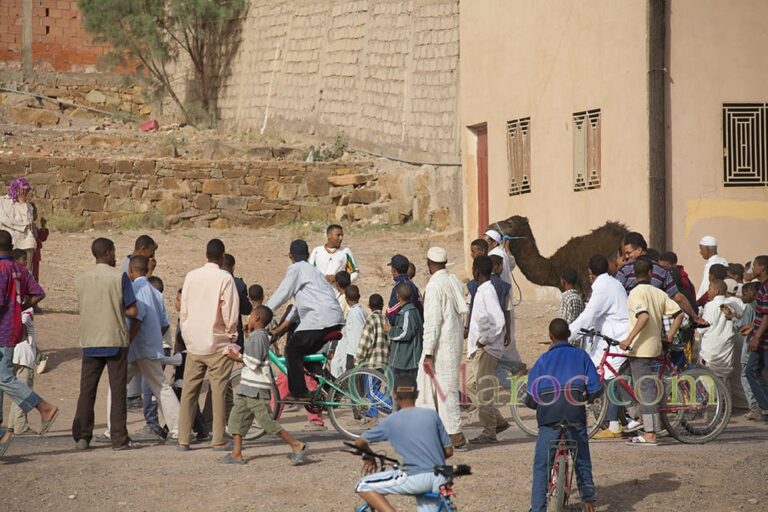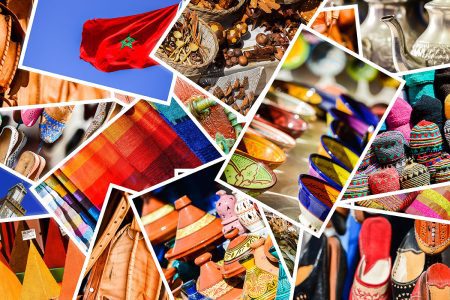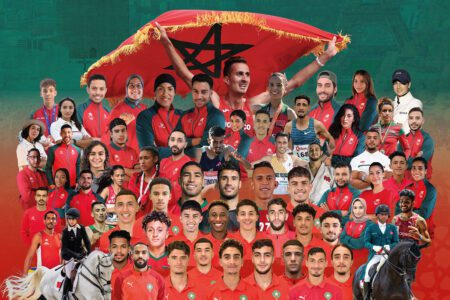When we did tours in Morocco, moussems were obviously events that interested our customers and we always tried to offer itineraries around some of the most famous ones.
The Rose Festival in Kelaa M’Gouna
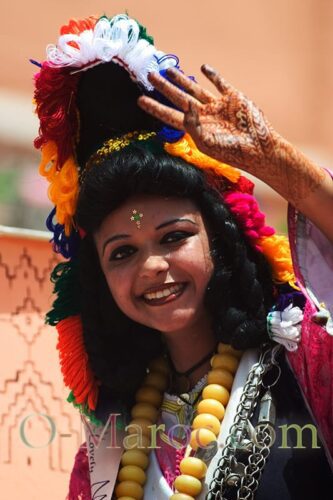
This moussem is traditionally held on the first weekend in May. The streets of Kelaat Mgouna are filled with music groups, sword dancers, ahaouache players and Gnawas, who follow the procession of floats, led by Malika t’Al Ouarde, the Queen of the Roses, the local equivalent of the Queen of the Nice Carnival.
Today, the festival is highly organised and attended by officials. But the pleasure of mingling with the noisy, happy crowds, enjoying the quality of the shows and hanging out in the souk that has invaded the streets of the town remains intact.
It’s best to arrive two or three days early, to be able to enjoy the rose gardens in the Valley. On the day of the moussem, all the roses are cut, and the necklaces of flowers on offer for a few dirhams are no substitute for the abundant beauty of the roses in full bloom.
The date of the festival depends on the rose harvest, and is only known with certainty two or three weeks beforehand. If you want to see the moussem, plan your travel dates a little ahead, and check at the last minute when it takes place.
Boukhari Tamegroute, near Zagora
This moussem takes place a month after Eid-El-Kebir, in the zawiya of Tamegroute, founded in the 17th century by Abu Abdallah Mohammed Abu Nasr and boasting an impressive library, the oldest manuscript of which dates back to 1063. He was also a great traveller, making six pilgrimages to Mecca, each preceded by a long journey (Egypt, Iraq, Persia…) and bringing back an impressive collection of manuscripts from his expeditions. At the time of his death in 1707, the Zawiya’s library contained more than 4,000 manuscripts, including some very rare 13th-century writings, ink and walnut stain on gazelle parchment. This pilgrimage is one of the most important in southern Morocco.
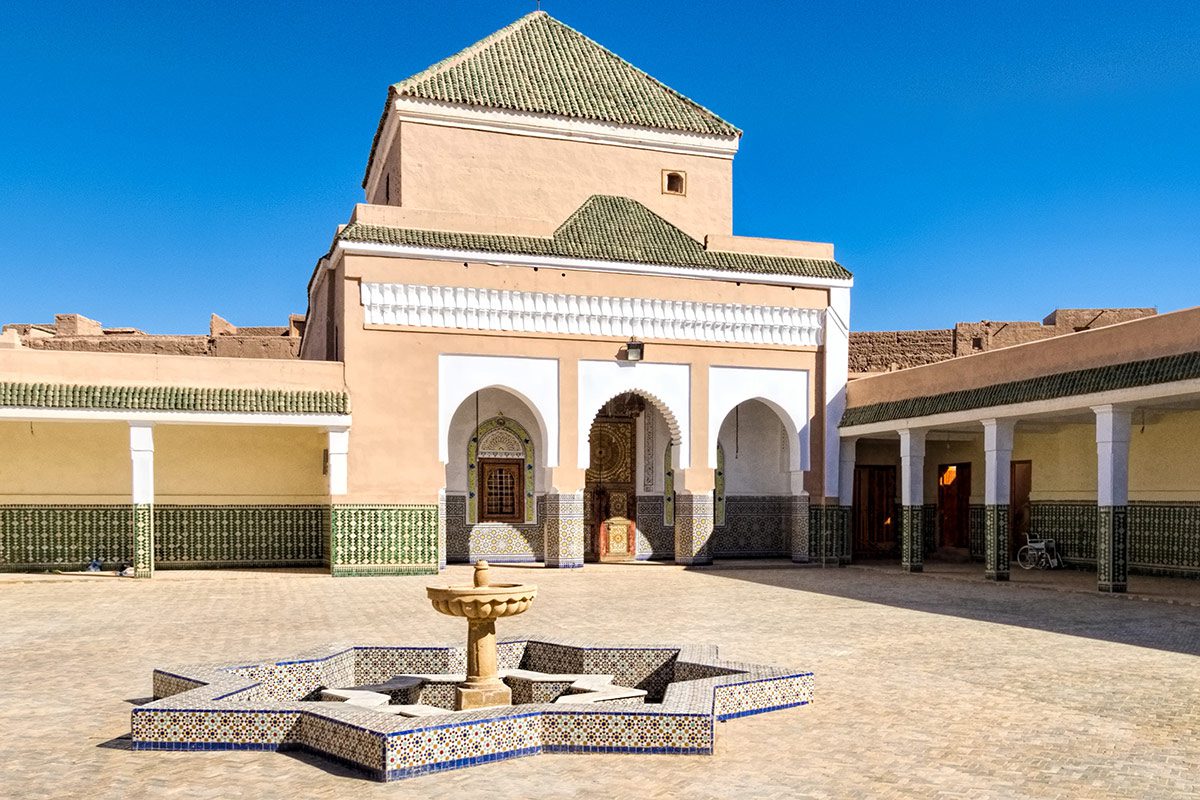
The zaouia is still active, and this moussem is essentially religious. The next one will take place on Wednesday 27 May 2026.
The Imilchil engagement moussem
Aït Ibrahim and Aït Yaaza were the two fractions of the Aït Hadiddou tribe, at war with each other. But according to legend, a young Aït Yaaza girl loved a handsome Aït Ibrahim (who was perhaps an Aït Brahim?). Like Romeo and Juliet in the High Atlas, they suffered the same tragic fate, dying without being able to love or marry. They mourned their affliction with all their tears, which gave birth to the twin lakes Isli (the fiancé) and Tislit (the fiancée). Their parents, repentant, decided that once a year, young men and women could choose each other freely, and that those who decided to marry at the moussem would not encounter any opposition to their union.
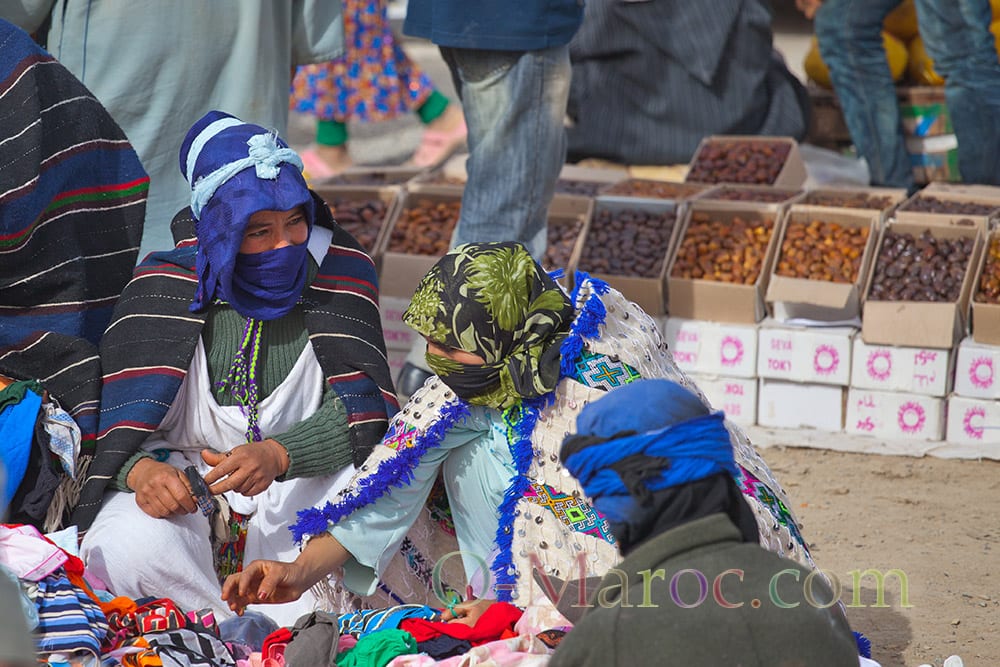
“Every year since then”, the engagement moussem is held in Imilchil, or more precisely in Aït Ameur, at the end of August. This is the big festival of the Aït Hadiddou, which still includes many nomads, and over three days all the events of family life take place, including the circumcision of children, engagements and weddings.
Set in an extraordinary landscape, this moussem is not to be missed. Once again, it’s best to ask around, as the exact dates are known rather late.
The date moussem in Erfoud
Before 2006, it took place in October, after the harvest (so once again, a moussem whose date is not fixed a long time in advance), and for three days, we celebrated the harvest and this fruit that Moroccans love so much.
It’s an everyday treat, the fruit you eat with whey to break the fast during the month of Ramadan, but also the light, energising food you take with you on your travels. Some types of date can be kept for years without spoiling…. but they are so hard that they have to be grated or soaked in water for a long time before they can be eaten!

Under the Berber tents set up for the occasion, you could sample dates and mint tea, of course, as well as Erfoud’s speciality, kahlia, a tagine of minced mutton with eggs, tomato, onions, peppers and no fewer than 44 spices. The third day, not to be missed under any circumstances, was the camel race in the Merzouga dunes. Unfortunately, in 2006, the moussem was replaced by an “International Date Fair”. Moved forward to mid-September, it has, in the words of the tourism authorities themselves, “abandoned its social aspects in favour of its commercial objectives”.
To be avoided…
Some other agricultural moussems
Other moussems or festivals are organised around the harvest, such as
- the Almonds moussem, in Tafraout, in the Agadir region (the last edition took place on 24 February 2024) ;
- the Honey Festival in Imouzzer, in the Agadir region (normally held in July-August, last known to have taken place in May 2022);
- the Cherry Festival in Séfrou, in the Fez region (in June). In 2017, this festival was included on the representative list of the intangible cultural heritage of humanity ;
- the Tan Tan moussem, also on the world cultural heritage list, August or September ;
- the Clementine festival in Berkane, near Oujda (November).
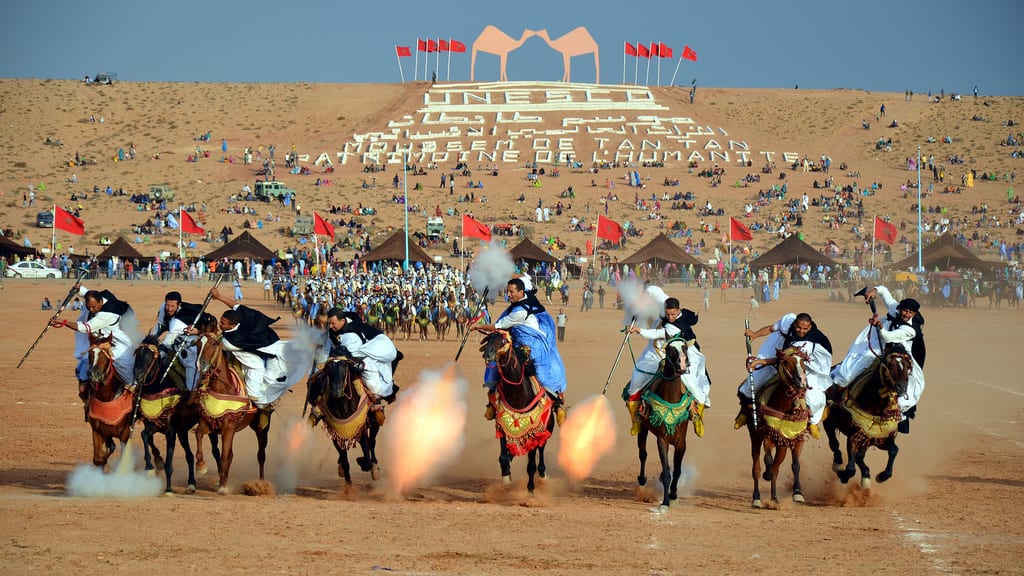
Religious moussems
Unlike “agricultural” moussems, their primary purpose is to honour a saint. But they are also the occasion for meetings, sporting events, festivals and a large suq.
- the dromedary week, in Guelmim or Moussem Sidi Ben Omar Al Asriri , in July, and its famous dromedary race ;
- the Moussem Moulay Abdellah Amghar near El Jadida (July or August) is the traditional horse festival;
- the moussem of Moulay Idriss Al Akhbar, at Moulay Idriss Zerhoun in the Meknes region; considered “the pilgrimage of the poor”, it brings together numerous brotherhoods, Sufi and Issawiyya (end of August).
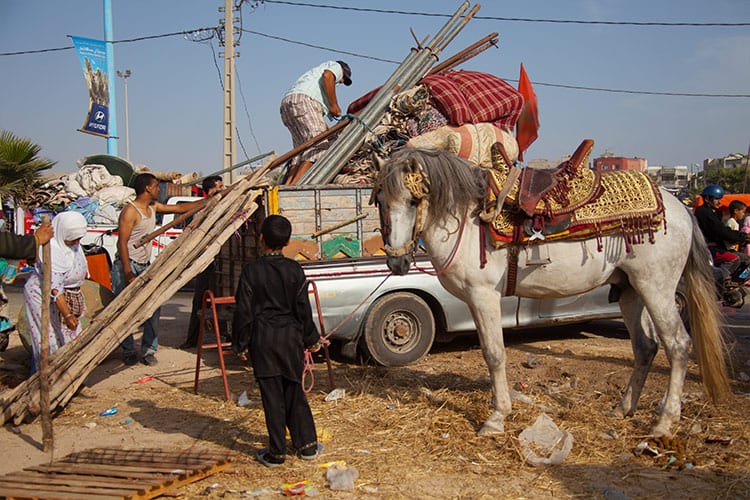
 A typo or syntax error? You can select the text and hit Ctrl+Enter to send us a message. Thank you! If this post interested you, maybe you can also leave a comment. We'd love to exchange with you !
A typo or syntax error? You can select the text and hit Ctrl+Enter to send us a message. Thank you! If this post interested you, maybe you can also leave a comment. We'd love to exchange with you !

